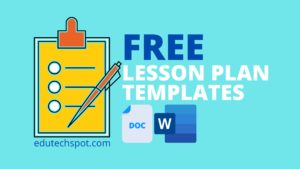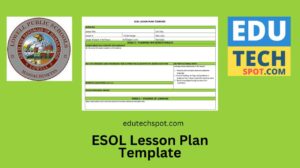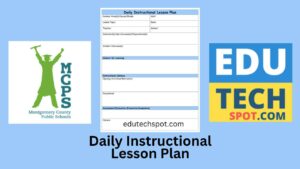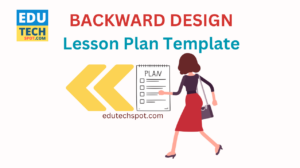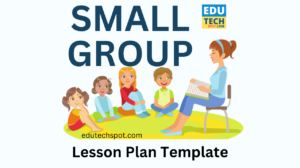Direct Instruction Lesson Plan Template that you choose, download, and use as you need. Discover the simplicity of effective teaching with my Direct Instruction Lesson Plan Template. As an educator, I understand the importance of clear and organized lesson plans, which is why I’ve crafted templates that you can easily edit to suit your unique teaching style and content.
Direct Instruction Lesson Plan Template Files to Download
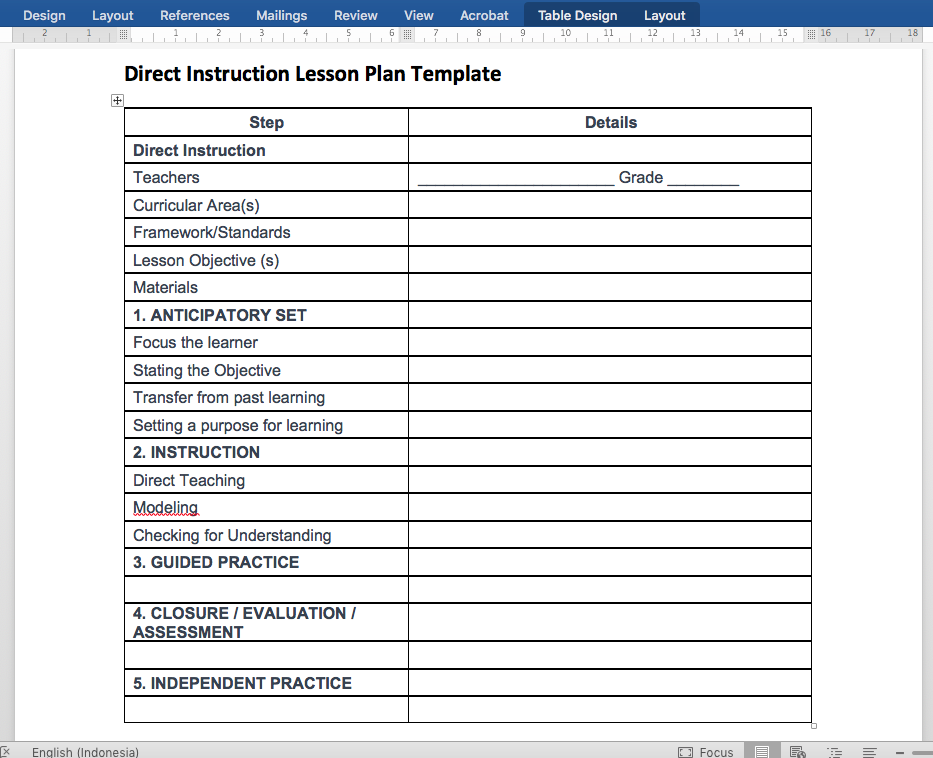
This table is like a guide for teachers to plan lessons in a clear way. It has five steps to follow, making it easier to teach.
In the “Direct Instruction” part, you put your name, the grade you teach, and what subjects you’ll cover. This helps you make sure your lesson fits with what students need to learn.
The first step, “1. ANTICIPATORY SET,” is about starting your lesson in a good way. You get students interested, say what they’ll learn, and remind them of what they already know.
Next is “2. INSTRUCTION.” Here, you teach directly, show examples, and check if students understand. It helps make sure everyone gets the lesson.
After that is “3. GUIDED PRACTICE.” You have space to plan activities that fit your lesson. This helps students practice with your help.
In “4. CLOSURE/EVALUATION/ASSESSMENT,” you finish the lesson well. You summarize what was learned, check how well students did, and make sure they understand.
The last step, “5. INDEPENDENT PRACTICE,” is when students do things on their own. This helps them use what they learned by themselves.
So, this table is like a roadmap to make your teaching organized and make sure students really understand what you teach.
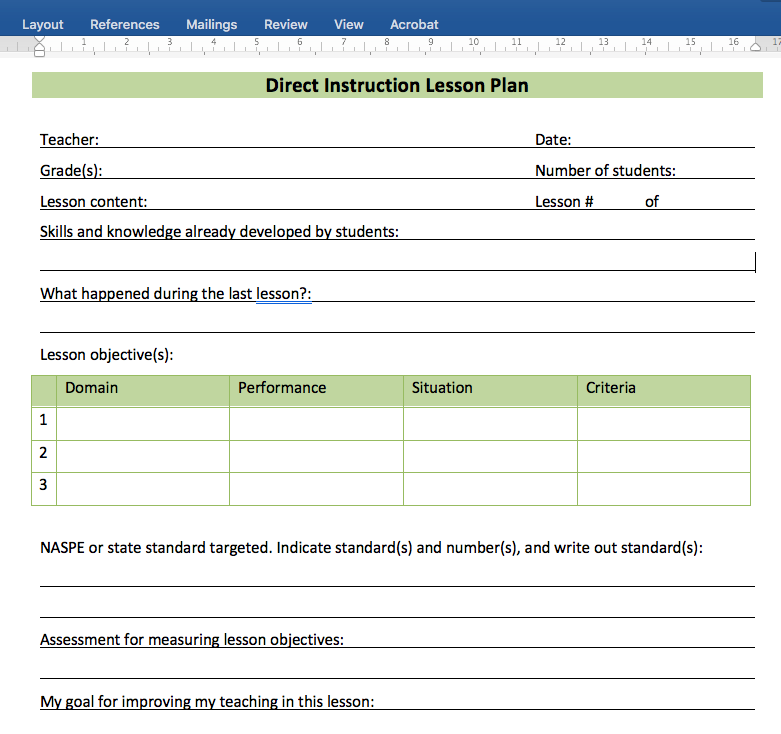
Hey fellow teachers! Check out this awesome lesson plan template – it’s like the Swiss Army knife for organizing your lessons. Seriously, it’s a game-changer.
At the top, you’ve got your basics covered – your name, the date, and all that jazz. Plus, you can jot down the grade you’re teaching and how many students are in your squad. Easy peasy.
Then, it nudges you to think about what your students already know and what went down in your last class. Reflecting on that sets the stage, you know?
Now, the juicy part – lesson objectives. And not just any objectives – we’re talking domains, performance, situation, and criteria. It sounds fancy, but trust me, it helps you laser-focus your teaching goals.
And hey, we’re hitting those standards! NASPE or state standards, to be precise. You gotta specify which ones you’re tackling. It keeps you on the straight and narrow, aligning your teaching with the big educational goals.
Assessment? It’s got your back. Plan how you’ll measure those objectives and, here’s the kicker, set a personal goal for improving your teaching. It’s like a mini pep talk with yourself.
Then, equipment and resources – because you don’t want to be the teacher caught without the necessary tools. And inclusivity? It’s got a spot for that too. Plan different strokes for different folks, especially for students with special needs.
The template doesn’t leave you hanging after the lesson. There’s a spot for review and closure – your chance to reflect on what went well and what could use a little more love.
Now, the nitty-gritty – planning your class segments. From the warm-up to transitions, it’s all laid out. Even if you’re a planning wizard, this helps keep things tight and ensures no teaching stone is left unturned.
So, why not give it a shot? It’s like having a lesson planning assistant that doesn’t take sick days. Your teaching game is about to level up!
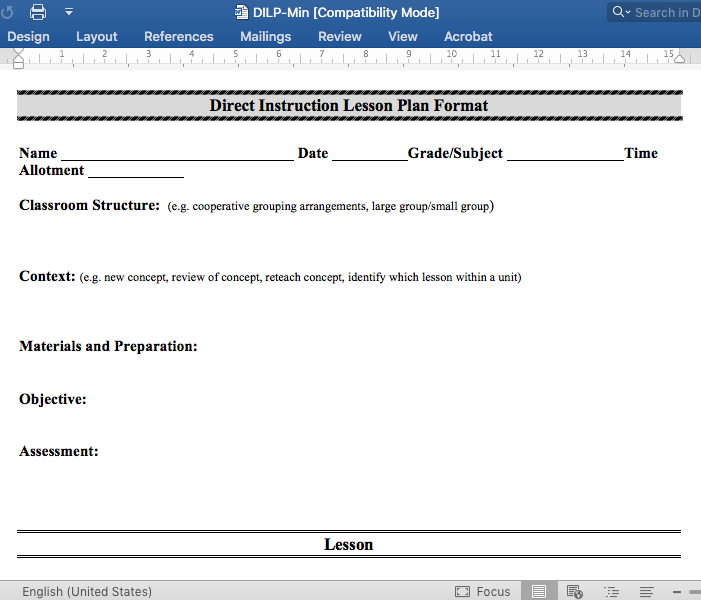
Direct Instruction Lesson Plan Format:
Header Section: At the outset, the document delineates essential particulars, including the instructor’s name, the date, the grade, subject, and the designated time allotment for the lesson.
Classroom Structure: This section prompts the articulation of the instructional setting, elucidating whether the lesson will transpire in a collaborative grouping arrangement, a large group, or a small group context.
Context: This facet seeks to ascertain the contextual framework of the lesson. It prompts the instructor to specify whether the instruction pertains to the introduction of a novel concept, the review of a pre-existing concept, a reiteration of a concept, or the identification of the lesson within a broader unit.
Materials and Preparation: Acknowledging the significance of logistical preparedness, this section requires the instructor to compile an inventory of requisite materials and preemptive preparations to forestall unforeseen impediments.
Objective: The “Objective” segment delineates the overarching goal of the lesson. It functions as a guiding beacon, elucidating the intended outcome of the instructional endeavor.
Assessment: Here, the document stipulates the mechanisms by which the instructor intends to assess the efficacy of the lesson. This may include quizzes, observational assessments, or alternative evaluative modalities.
Lesson – Introduction: In the initial phase of the lesson, the document advocates for the deployment of an “Anticipatory Set.” This strategic element serves to engender interest, present an overview, state objectives explicitly, and pre-assess prior knowledge.
Procedures – Presentation: The subsequent section, under “Procedures,” pertains to the presentation of instructional content. It encompasses explanation, modeling, and/or demonstration techniques.
Procedures – Checking for Understanding: Following the presentation, the document underscores the imperative to gauge comprehension through diverse methods, including questioning, observation, quizzes, and the active involvement of all students.
Procedures – Guided Practice: The subsequent phase entails guided practice, wherein students are encouraged to apply acquired skills or concepts under the attentive supervision of the instructor. Continuous monitoring, feedback provision, and individual assessment are integral to this stage.
Closing: The concluding segment underscores the significance of a structured conclusion. The closure entails a review or summarization of the key learning objectives.
Closing – Independent Practice: Post-closure, students are assigned independent practice tasks. This component serves as an avenue for the application and consolidation of newly acquired skills.
Extension: In instances where time allows or some students conclude tasks expeditiously, the provision for extension activities is made. These supplementary exercises cater to students who may require further engagement.
Student Assessment Results: This segment necessitates the documentation of student assessment outcomes, particularly those aligned with the stated instructional objectives.
Self-Assessment: The final component invites the instructor to engage in a self-assessment, fostering a reflective practice wherein the effectiveness of instructional methodologies is scrutinized, and avenues for improvement are identified.
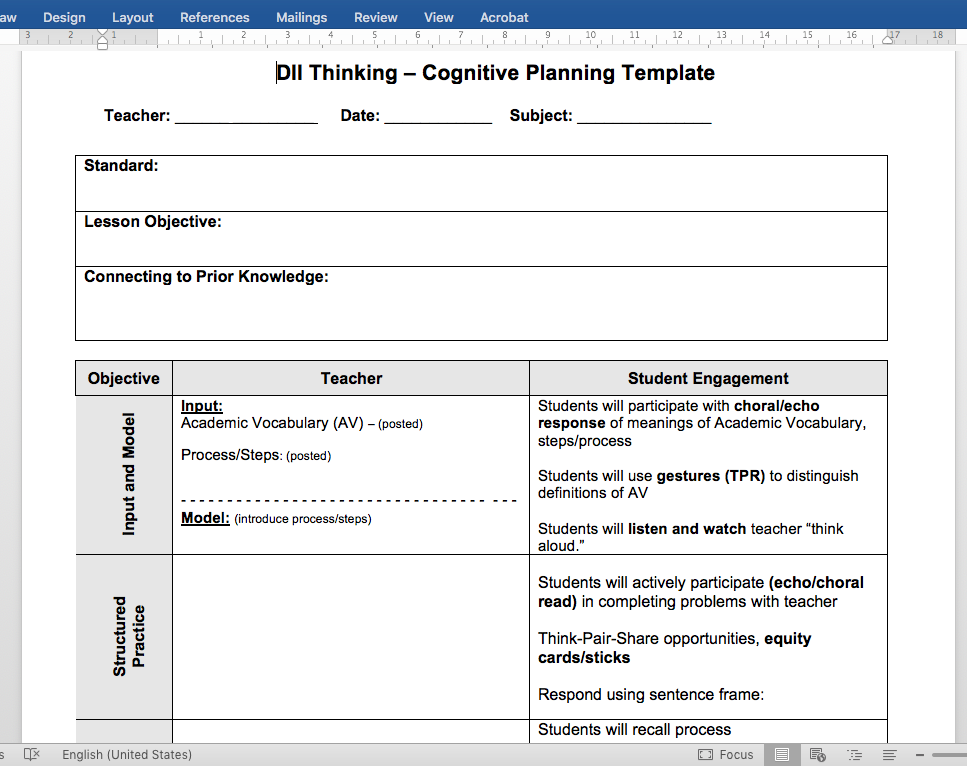
The “DII Thinking – Cognitive Planning Template” is a detailed guide for teachers to structure lessons using the Direct Instruction model.
It emphasizes connecting new content to prior knowledge, clearly defines lesson objectives, and outlines teacher and student roles in different phases of instruction, including Input and Model, Structured Practice, and Independent Practice.
The template concludes with a closure that revisits key points for student self-assessment. In addition, it reinforces the importance of modeling when students are acquiring new skills and not for routine exercises.
The document encourages clear standards and objectives, thoughtful engagement strategies, and a gradual release of responsibility from teacher to student.

